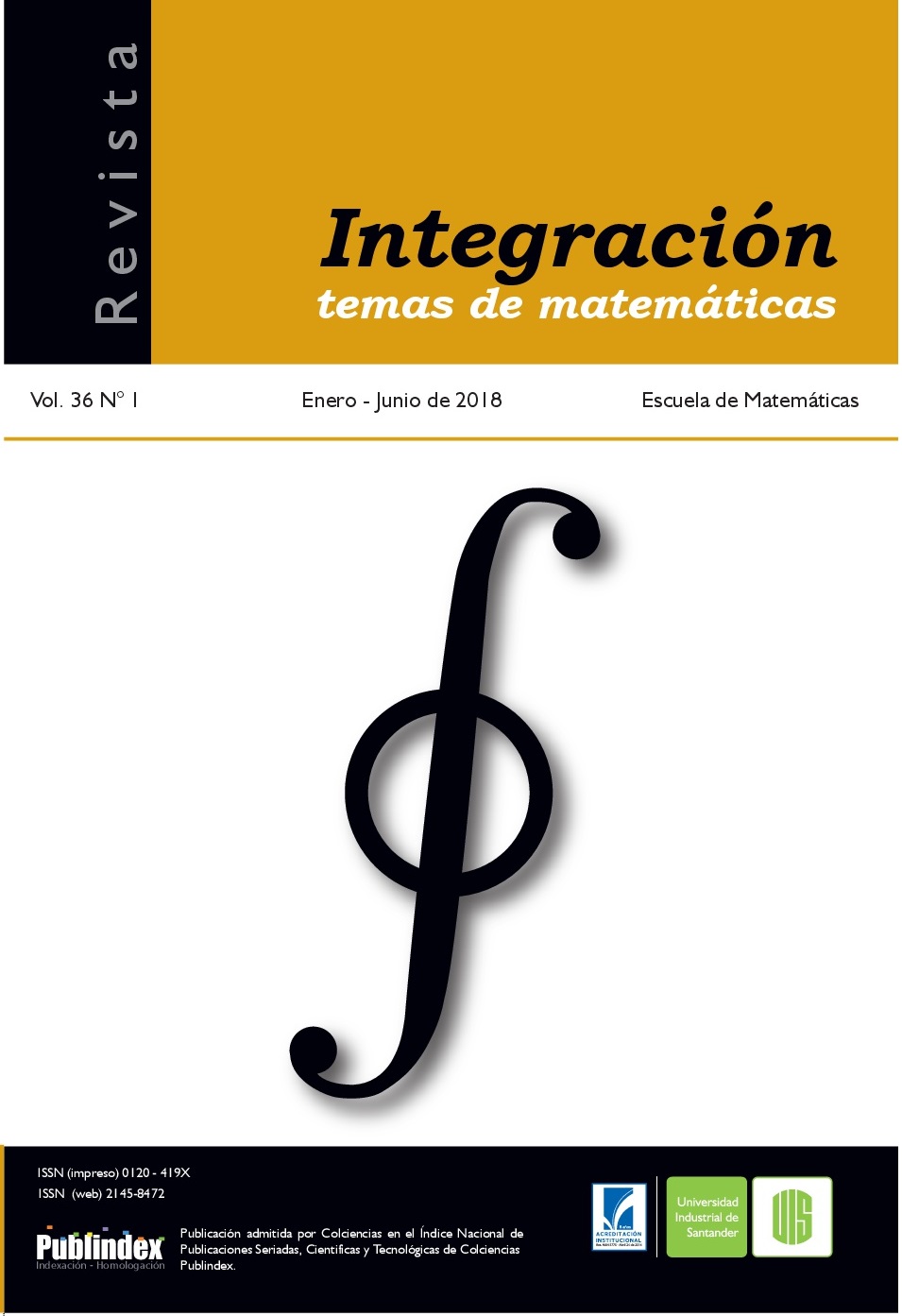Research and Innovation Articles
Published 2018-07-18
Keywords
- Leray-Schauder degree,
- SIQS models,
- periodic orbits,
- reproductive number
How to Cite
Osuna Castro, C. O., Guerrero Flores, S., & Villavicencio Pulido, G. (2018). Existence of periodic solutions for seasonal epidemic models with quarantine. Revista Integración, Temas De matemáticas, 36(1), 37–47. https://doi.org/10.18273/revint.v36n1-2018003
Abstract
In this work, we establish the existence of periodic orbits for a seasonal saturated epidemiological model of a population consisting of susceptible, infectious and quarantined individuals (an SIQS model). To do so,
we use Leray-Schauder degree theory. We also provide numerical examples of these solutions.
Downloads
Download data is not yet available.
References
[1] Adnani J., Hattaf K. and Yousfi N., “Stability Analysis of a Stochastic SIR Epidemic Model
with Specific Nonlinear Incidence Rate”, Int. J. Stoch. Anal. (2013), Art. ID 431257, 4 pp.
[2] Capasso V. and Serio G., “A generalisation of the Kermack-McKendrick deterministic epi-
demic model”, Math. Biosci. 42 (1978), 43–61.
[3] Feng Z. and Thieme H. R., “Endemic models with arbitrarily distributed periods of infection
II: Fast disease dynamics and permanent recovery”, SIAM J. Appl. Math 61 (2000), No. 3, 983–1012.
[4] Feng Z. and Thieme H. R., “Recurrent outbreaks of childhood diseases revisited: the impact
of isolation”, Math. Biosci. 128 (1995), 93–130.
[5] Hethcote H., Zhien M. and Shengbing L., “Effects of quarantine in six endemic models for
infectious diseases”, Math. Biosci. 180 (2002), 141–160.
[6] Kar T. and Batabyal A., “Modeling and Analysis of an Epidemic Model with Non-
monotonic Incidence Rate under Treatment”, J. Math. Res. 2 (2010), No. 1, 103–115.
[7] Katriel G., “Existence of periodic solutions for periodically forced SIR model”, J. Math.
Sci. (N.Y.) 201 (2014), No. 3, 335–342.
[8] Liu W., Levin S. and Iwasa Y., “ Influence of nonlinear incidence rates upon the behaviour
of SIRS epidemiological models”, J. Math. Biol. 23 (1986), 187–204.
[9] Liu, W., Hethcote H. and Levin S., “Dynamical behaviour of epidemiological models with
nonlinear incidence rates”, J. Math. Biol. 25 (1987), 359–380.
[10] Shang L., Meng F. and Xinmiao R., “Global threshold dynamics of SIQS epidemic model
in time fluctuating environment”, Int. J. Biomath. 10 (2017), No. 4, 1750060.
[11] Van den Driessche P. andWatmough J., “Reproduction numbers and sub-threshold endemic
equilibria for compartmental models of disease transmission”, Math. Biosci. 180 (2002), 29–48.
[12] Xiao D. and Ruan S., “Global analysis of an epidemic model with non monotone incidence
rate”, Math. Biosci. 208 (2007), 419–429.
with Specific Nonlinear Incidence Rate”, Int. J. Stoch. Anal. (2013), Art. ID 431257, 4 pp.
[2] Capasso V. and Serio G., “A generalisation of the Kermack-McKendrick deterministic epi-
demic model”, Math. Biosci. 42 (1978), 43–61.
[3] Feng Z. and Thieme H. R., “Endemic models with arbitrarily distributed periods of infection
II: Fast disease dynamics and permanent recovery”, SIAM J. Appl. Math 61 (2000), No. 3, 983–1012.
[4] Feng Z. and Thieme H. R., “Recurrent outbreaks of childhood diseases revisited: the impact
of isolation”, Math. Biosci. 128 (1995), 93–130.
[5] Hethcote H., Zhien M. and Shengbing L., “Effects of quarantine in six endemic models for
infectious diseases”, Math. Biosci. 180 (2002), 141–160.
[6] Kar T. and Batabyal A., “Modeling and Analysis of an Epidemic Model with Non-
monotonic Incidence Rate under Treatment”, J. Math. Res. 2 (2010), No. 1, 103–115.
[7] Katriel G., “Existence of periodic solutions for periodically forced SIR model”, J. Math.
Sci. (N.Y.) 201 (2014), No. 3, 335–342.
[8] Liu W., Levin S. and Iwasa Y., “ Influence of nonlinear incidence rates upon the behaviour
of SIRS epidemiological models”, J. Math. Biol. 23 (1986), 187–204.
[9] Liu, W., Hethcote H. and Levin S., “Dynamical behaviour of epidemiological models with
nonlinear incidence rates”, J. Math. Biol. 25 (1987), 359–380.
[10] Shang L., Meng F. and Xinmiao R., “Global threshold dynamics of SIQS epidemic model
in time fluctuating environment”, Int. J. Biomath. 10 (2017), No. 4, 1750060.
[11] Van den Driessche P. andWatmough J., “Reproduction numbers and sub-threshold endemic
equilibria for compartmental models of disease transmission”, Math. Biosci. 180 (2002), 29–48.
[12] Xiao D. and Ruan S., “Global analysis of an epidemic model with non monotone incidence
rate”, Math. Biosci. 208 (2007), 419–429.
